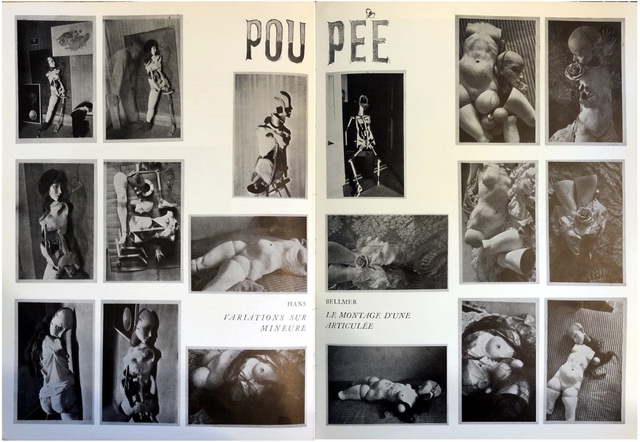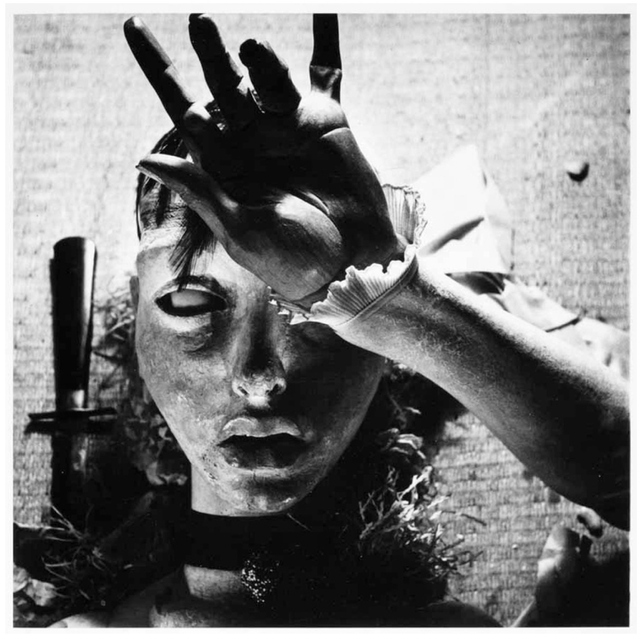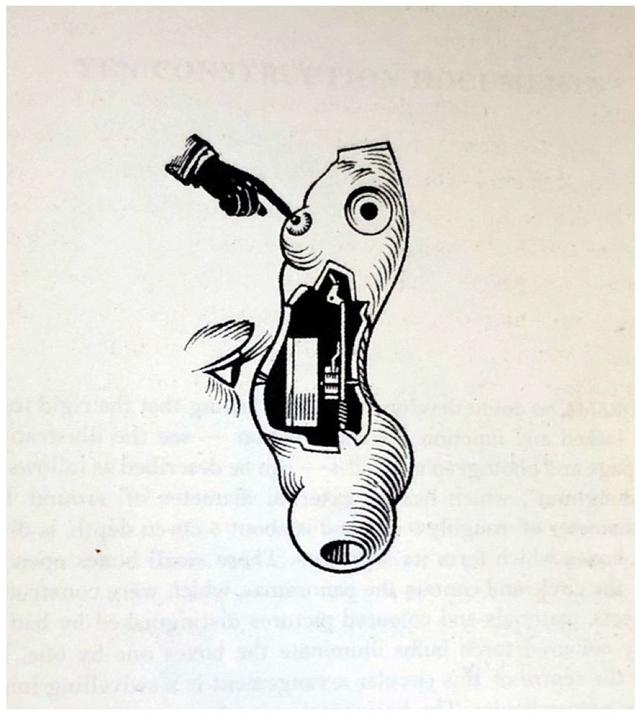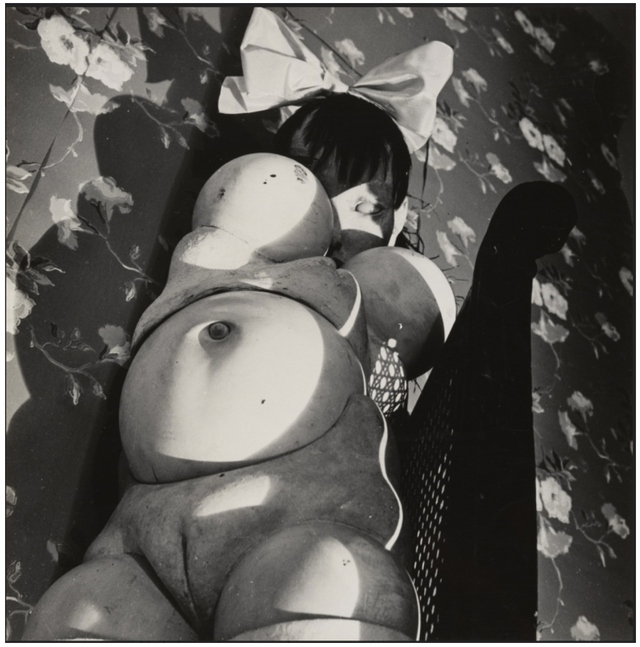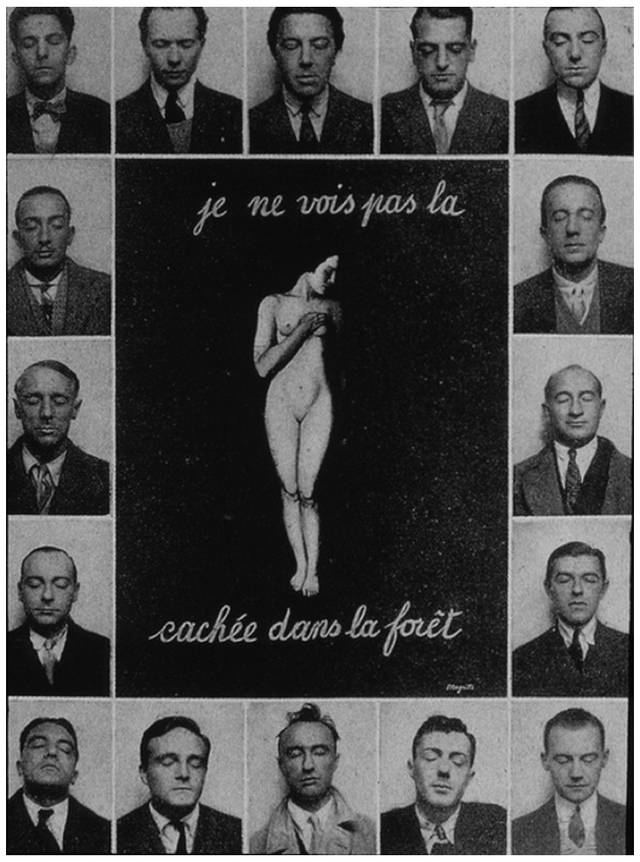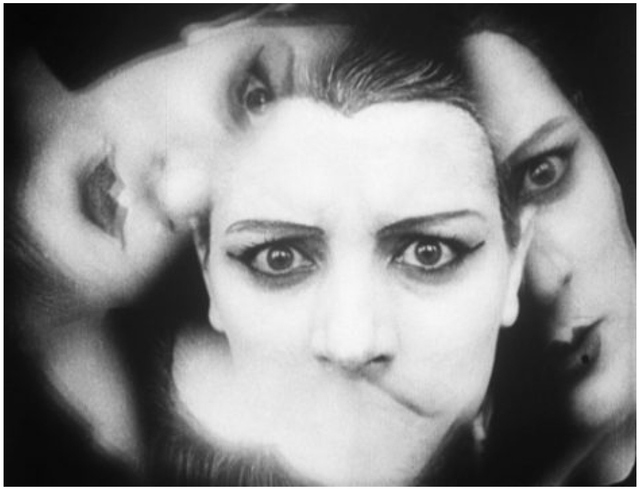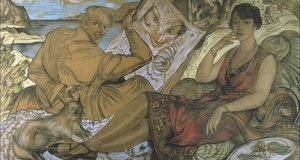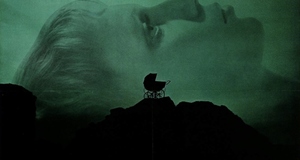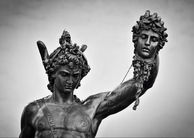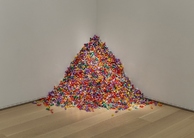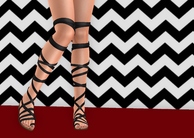Hans Bellmer's Dolls and the Subversion of the Female Gaze
By
2021, Vol. 13 No. 01 | pg. 1/1 AbstractHans Bellmer’s Die Puppe (The Doll) photographic series is perhaps one of the most bizarre works to come out of the surrealist group in the early-to-mid twentieth century. Of every peculiar aspect of the photographs, perhaps the most striking is his treatment of vision. Bellmer always poses his dolls, which he disassembles and reassembles into various unnatural shape, so they face away from his camera. Sometimes, he removes their eyes altogether. Bellmer himself wrote extensively about his doll, which was also featured in the surrealist magazine Minotaure. Many of the themes his doll project addresses correspond with theoretical and fictional writings of André Breton, along with many of the theories of Sigmund Freud, whom the surrealist group largely praised as a champion of the human mind. In fact, many surrealists examined female gaze in their work, but scholarship has failed to explore this in great depth. I will be examining these important surrealist texts, along with contemporary publications by scholars such as Sue Taylor, who performed a biographical examination of Bellmer’s oeuvre; and Hal Foster and Marie-Thérèse Killiam, who individually analyzed attraction and violence in surrealist artists and writers. Here, I will examine these sources to show that Bellmer, like many of his contemporaries, unable to fully understand and take control of female bodies, compensated for his confusion by obstructing or removing the vision of the dolls in his artwork, thereby preventing them from seeing and taking ownership over their surroundings. I believe these conclusions may be applied to many of Bellmer’s fellow surrealists and help scholars better understand what it meant for the surrealists to see. The surrealist movement comprises of works of art and literature that frequently cause discomfort in their audiences. Of these, some of the most infamous works are German artist Hans Bellmer’s photographs of near life-sized dolls from the mid-1930s. Since their creation, art historians and critics have attempted many explanations of Bellmer’s artistic rationale. More scholars have recently acknowledged the violent misogyny of the photographs instead of focusing only on Bellmer’s rebellion against rising Nazism and an industrialist commodification of the body.2 However, none has discussed how Bellmer often centered his violence on the eye or gaze of his dolls. Understanding of this focus not only adds greater depth to Bellmer’s oeuvre, but it may also heighten scholarly understanding of the surrealist group as a whole. In 1933, Bellmer and his younger brother, Fritz, constructed his first doll, which Sue Taylor describes well as “a molded torso made of flax fiber, glue, and plaster; a masklike head of the same material with glass eyes and a long, unkempt wig; and a pair of legs made from broomsticks or dowel rods” made to resemble an adolescent girl. 3 It was not until the beginning of 1935 that he received notoriety in the surrealist group, when eighteen photographs of this doll were featured in a two-page spread in the Winter 1934-1935 edition of the surrealist magazine Minotaure [Figure 1]. The photographs were published with no corresponding text or descriptions, simply the subtitle: “Variations sur le montage d’une mineure articulée” [“Variations on the assembly of an articulated minor”]. 4 As the subtitle suggests, each photograph shows the doll in various state of assembly, lying on floors or leaned against walls.Despite the differences in each image, one aspect remains constant: each photograph including the doll’s head shows it at a side profile, never pointing at or toward the viewer. Often, the eyes are left separate from the face and lie next to the body, like marbles. Other parts of the body, such as the legs, often appear in a functional position, but never the eyes. His second version of the doll, made soon after the completion of his first one, has a far more complex body, with one central ball representing the abdomen, two pelvises, two sets of legs, at least one arm, and extra accessories, with the first doll’s original head and hand. Bellmer’s photographs of this doll sometimes grant the audience a full view of the doll’s face, but it appears to be blind, with no visible pupils [Figure 2]. Paul Éluard, French poet and another prominent member of the surrealist group, took note of this absence of gaze in the collection of prose poems he created for Bellmer’s second doll, writing: “It’s a girl! – Where are her eyes? – … It’s a girl, it is my desire!” alongside one photograph.5 Bellmer clearly appreciated these poems, publishing them in conjunction with his own essays about his dolls. This poses the question of why Bellmer and others were so particularly concerned with his doll’s gaze above other parts of the body. Such an interest in the female gaze greatly reflects Bellmer’s understanding of the female body and use of his doll as a “poetic stimulator” that inspired self-reflection and understanding.6 Bellmer wrote extensively about his obsession with young girls, making clear the pedophilic implications of his work. His primary inspiration was his teenage cousin, Ursula, to whom he was sexually attracted and for whom he intended his doll to become a partial substitute onto which he could project his desires.7 Bellmer was particularly interested in items frequently attributed to young girls. His essay 1934 essay, “Memories of the Doll Theme,” describes his obsession with the “black Easter eggs with their doves and pink sugary curlicues” of girlhood and what made their fragility so suited to femininity.8 Such delicate objects, such as as roses, doilies, and scraps of tulle, appear alongside his first doll in his photographs. In linking these objects with parts of the female body, Bellmer establishes them as equally fragile. However, despite the doll’s implied fragility, Bellmer acknowledges an impenetrable aspect of their existence, asking his reader:
That “averted look” appears to be a display of the young girl’s autonomy, as only she can determine who receives her attention. Here Bellmer’s apparent desire for intimacy with the young girl connects directly with his desire for control over her. His “final triumph,” which one could equally view as an assault by examining his diction, involves taking possession of the body part in control of those averted looks. The more one examines Bellmer’s dolls, the more spherical shapes in general rise in importance to his work. His photographs are filled with marbles, glass eyes, pearls, and the ball joints that hold his doll together. One of his illustrations of the first doll’s torso from a side view demonstrate how the breasts, stomach, and buttocks resemble spheres [Figure 3]. They become even more important to photographs of his second iteration of the doll, where ball joints at the hip sockets are often positioned to resemble disproportionately large breasts [Figure 4]. Applying theories to a group as eclectic as the surrealists can be difficult, but spheres and circles are evidently not uncommon in surrealist art of the period. One reason for their prevalence may be the perfection that distinguishes them from other shapes. Spheres are infinitely symmetrical, and creating them requires the use of technology that surpasses human error. Regardless, humans are born with two spherical eyes that can peer in many directions. On a doll, the sphere shape allows the body to move more flexibly, which Bellmer found “rich in chance and possibilities.”10 For Livia Monnet, who focuses on the idea of permutation in Bellmer’s dolls, this flexibility is essential to Bellmer’s control over the female body, making what she calls “a plastic anagram” that one can dislocate and constantly rearrange.11 In this sense, spheres on the doll create their own paradox: eyes allow one to examine a space and rearrange images of it in the brain.12 Simultaneously, round shapes on the doll itself allow the body to be rearranged by others. As a result, the sphere allows the body to exercise control over its landscape, but it also allows members of that landscape to exercise control over the body. The eyeball is also central to Bellmer’s experience with the automaton in art. In the early months of 1932, Bellmer saw a performance of the Tales of Hoffmann, an opera based on famous short stories by E. T. A. Hoffmann, one of which was his 1816 Der Sandmann. 13 The short story follows a young man who finds himself enamored with a beautiful woman, Olimpia, who he later discovers is a doll and whose creator is his father’s murderer and the source of his childhood trauma. The murderer, Coppelius, claims ownership of Olimpia over the man who made her internal clockwork, because Coppelius specifically made her eyes; seeing her without her eyes leads the protagonist to understand his lover was never truly alive. As a result, he enters a fit of madness.14 André Breton praises the founder of psychoanalysis, Sigmund Freud, in his first surrealist manifesto for his understanding of the human mind and the objects that cause it discomfort. 15 In his essay on “The Uncanny,” Freud discussed the automatic “processes that may lie hidden behind the familiar image of a living person.”16 Both Bellmer and Hoffmann noted through their artworks how the eye can both blur and clarify the differences between the human and the mechanical. In many ways, the ball-jointed doll resembles an industrialist’s dream of interchangeable parts and functions. As Bellmer made his doll easier to manipulate, with more possibilities for rearrangement, he also made its artificiality more obvious. The doll’s utter inhumanness is conspicuous, almost proudly placed on display. Each assembly of Bellmer’s first doll resembles a feminine doll in pieces, but many iterations of his second, ball-joint doll share more qualities with a spider or a pile of bubbles than a girl; its disfiguration becomes more central. Fragmented images of women are common in surrealist art. For instance, fragmented images of feminine features, household objects such as pots, and circular mechanical objects appear like parts of a kaleidoscope in Fernand Léger’s film, Ballet Mécanique [Figure 6], as if they could all be parts of the same whole. The border between femininity, commodity, and machine blur. In participating in the mass market economy, woman both relies on machines and becomes part of a machine. Hal Foster notes in Compulsive Beauty how definitions of female and mechanical became intertwined during the Industrial Revolution. Foster claims that:
This fear or sense of discomfort likely arises from the uncanny perception that a feminine, therefore sensual and Dionysian, force is so closely connected to powerful, yet unfeeling objects. Through that understanding of the feminine and the mechanical, Bellmer’s reason for obstructing the view of his dolls becomes even clearer. Bellmer, sensing danger in the power of the mechanical-female, reacts by removing the eyes, the tools that allow the doll to permute the viewer as the viewer permutes the female body. The inherent violence in the act of removing eyes in Bellmer’s work also must be confronted. Although the eyeballs laid on the floor in Bellmer’s photographs better resemble toys than remnants of a crime scene, Marie-Thérèse Killiam refers to Bellmer’s scenes as mutilations, and she finds this violent tendency prevalent in the work of many surrealists.18 Such surrealist artistic violence does not necessarily include gore, but it often demonstrates how the masculinized artist, seeking to exert control over his medium, selects an inherently defenseless female object to manipulate to suit his desires. For instance, Bellmer does not give his first doll arms because they do not interest him, but he has an expressed fascination in girls’ legs and chooses to include them in the doll.19 He obstructs the gaze because he believes it is the artist’s role, not the doll’s, to deconstruct and understand his environment. Bellmer has not murderously ripped his doll’s eyes and arms from their sockets. Instead, he deems these parts of the body unnecessary and removes them from existence. Bellmer has therefore mutilated the doll by omission rather than by elimination. He has birthed something that lacks even the potential for autonomy. Ultimately, this surrealist inclination for outward violence turns inward, as the artist poeticizes his own actions as a method of understanding himself—or, rather, the human (male) experience. Sue Taylor, author of Hans Bellmer: The Anatomy of Anxiety, a psychoanalytic and feminist examination of Bellmer’s oeuvre, sees this as evidence of a sadomasochistic impulse resulting from childhood abuse.20 However, I believe Bellmer’s inward focus demonstrates an idea Hal Foster aptly describes, that one can apply to many of Bellmer’s surrealist contemporaries: “the psychic shattering (the convulsive identity) of the male subject may depend upon the physical shattering (the compulsive beauty) of the female image, that the ecstasy of the one may come at the cost of the dispersal of the other.”21 The male artist destroys the physical body of the female object to shatter his own inner boundaries. While Foster applies this shattering to the entire body, the doll’s nonexistent gaze suffices. Because the doll can no longer gaze at—or into—the viewer, he alone can examine himself. One potential obstacle in the argument that Bellmer attempted to halt the scrutinizing powers in women is the issue of imagination, especially considering its importance to surrealism. The imagination deconstructs outside objects and influences in a similar manner to the eye, and destroying one does not necessarily inhibit the other from operating. For instance, René Magritte’s I Do Not See the [Woman] Hidden in the Forest [Figure 5] is a photomontage of close-ups of over a dozen surrealists with their eyes closed, surrounding a painting of a nude women, whom they imagine but clearly do not see. Just as these men examine the female figure in their minds, the doll can also, as imagined by its viewer, exploit its own imagination. However, the doll’s fictional access to its imagination may substantially depend on its ability to access its memory. Many of the surrealists celebrated the idea that imagination originates in memory, something also drawn from Sigmund Freud’s discussions of the uncanny.22 Breton also wrote of this idea in the beginning of his short novel, Nadja, describing how he was concerned that he had no new experiences and was instead trapped in a cycle of reliving moments from the past and recalling only fragments of them—thus indicating that his mental processes were restricted.23 This belief in lived experience as a keystone of imagination may explain why Bellmer was particularly interested in young girls and why his dolls resemble a woman in the earliest stages of adolescence. Cousin Ursula, his teenage inspiration for the first doll, was in her late teens at the time Bellmer began his project,24 yet his final product looks to be far younger than that. One possible interpretation of this choice is that the adolescent girl Bellmer represents in his dolls is in too early a stage of development to form memories significant enough to properly fuel the imagination. Without the faculty of sight to witness pivotal events, the doll has not lived long enough to have memories of “repressed childhood complexes … revived by some impression, or … primitive beliefs that have been surmounted[,] … once again confirmed.” 25 Freud believed these memories constitute the uncanny experience, an experience that the surrealists championed. Hence, the doll remains confined to the viewer’s imagination: primitive, immobile, perpetually childlike, and non-threatening. This treatment of the female gaze is certainly not unique to Bellmer’s work. More artists associated with the surrealists focused on the gaze of their female subjects. Many did so just through descriptiveness, such as Breton in his descriptions of Nadja in his novel of the same name, and Man Ray with his photograph Glass Tears. Others were more plainly violent, such as Bataille’s descriptive horror in his novel Histoire de l’œil, or the infamous eye-slicing scene in the film Un Chien Andalou. Upon revealing the tendency toward obstruction in Bellmer’s work, one can identify a similar impulse in these other works, as well. Additionally, Bellmer’s oeuvre may be an especially beneficial case study in understanding the incredibly eclectic minds that make up the surrealist group. As someone who rose to prominence through a magazine influenced by Breton only to later create illustrations for Bataille’s Histoire de l’œil,26 Bellmer interacted with members of both the Bretonian and Bataillian sects of surrealism, not emphatically declaring loyalty to either group. At the same time, he maintained a level of independence from the group himself, as merely an “associate of the surrealists,” according to Foster.27 For Bellmer, and likely for many of his associates, the female gaze was both a subject of fascination and of anxiety. Given its largely unacknowledged importance in Bellmer’s work, more research performed with a focus on the female gaze will likely suggest a similar desire for obstruction in many of the surrealists. ReferencesBellmer, Hans. “The Ball-Joint.” In The Doll, translated by Malcolm Green and Antony Melvill, 57-70. London: Atlas Press, 2005. Bellmer, Hans. “La Poupée,”MinotaureNo.6 (Winter 1935). InMinotaure: Authorized Reprint Edition,vol. 2, edited by Albert Skira, 30-31. New York: Arno Press, 1968. Bellmer, Hans. “Memories of the Doll Theme.” In The Doll, translated by Malcolm Green and Antony Melville, 33-40. London: Atlas Press, 2005. Breton, André. “First Surrealist Manifesto.” In Manifestos and Declarations of the Twentieth Century, edited by Patricia Cormack, 204-226. Toronto: Garamond Press, 1998. Breton, André. Nadja, translated by Richard Howard. New York: Grove Press, Inc., 1960. Éluard, Paul. “The Games of the Doll.” In The Doll, translated by Malcolm Green and Antony Melville, 71-101. London: Atlas Press, 2005. Hoffmann, E.T.A. “The Sandman,” In Tales of Hoffmann, translated by R.J. Hollingdale. New York: Penguin Books, 1982. Foster, Hal. Compulsive Beauty. Cambridge: MIT Press, 1993. Freud, Sigmund. “The Uncanny.” In The Uncanny, translated by David McLintock. New York: Penguin Classics, 2003. Killiam, Marie-Thérèse .“Mutilation of Women by Surrealist Artists.” International Journal of Arts Theory & History 12, no. 1 (2017): 49-65. Monnet, Livia. “Anatomy of Permutational Desire, Perversion in Hans Bellmer and Oshii Mamoru.” Mechademia: Second Arc 5 (2010): 285-309. Taylor, Sue. Hans Bellmer: The Anatomy of Anxiety. Cambridge: MIT Press, 2000. Endnotes1.) Hans Bellmer, “The Ball-Joint,” in The Doll, trans. Malcolm Green and Antony Melville (London: Atlas Press, 2005), 59. 2.) See for example, Livia Monnet, “Anatomy of Permutational Desire, Perversion in Hans Bellmer and Oshii Mamoru,” Mechademia: Second Arc 5 (2010): 292. 3.) Sue Taylor, Hans Bellmer: The Anatomy of Anxiety (Cambridge: MIT Press, 2000), 24. 4.) Hans Bellmer, “La Poupée,”MinotaureNo.6 (Winter 1935) inMinotaure: Authorized Reprint Edition,vol. 2, ed. Albert Skira (New York: Arno Press, 1968), 30-31. 5.) Paul Éluard, “The Games of the Doll,” in The Doll, trans. Malcolm Green and Antony Melville (London: Atlas Press, 2005), 98. 6.) Hans Bellmer, “The Ball-Joint,” in The Doll, 59. 7.) Ibid, 56. 8.) Hans Bellmer, “Memories of the Doll Theme,” in The Doll, trans. Malcolm Green and Antony Melville (London: Atlas Press, 2005), 37. 9.) Ibid, 40. 10.) Bellmer, “The Ball-Joint,” in The Doll, 59. 11.) Livia Monnet, “Anatomy of Permutational Desire, Perversion in Hans Bellmer and Oshii Mamoru,” 291. 12.) Whether Bellmer wants the girl his doll represents to have this imaginary brain could be another interesting topic for debate. His emphasis on the panorama device he intended to (but did not) place in the doll’s torso may imply that every other part of the body must be hollow. 13.) Taylor, Anatomy of Anxiety, 201. 14.) E.T.A. Hoffmann, “The Sandman,” in Tales of Hoffmann, trans. R.J. Hollingdale (New York: Penguin Books, 1982). 15.) Andre Breton, “First Surrealist Manifesto,” in Manifestos and Declarations of the Twentieth Century, ed. Patricia Cormack (Toronto: Garamond Press, 1998), 206. 16.) Sigmund Freud, “The Uncanny,” in The Uncanny, trans. David McLintock (New York: Penguin Classics, 2003), 135. 17.) Hal Foster, Compulsive Beauty (Cambridge: MIT Press, 1993), 134. 18.) Marie-Thérèse Killiam, “Mutilation of Women by Surrealist Artists,” International Journal of Arts Theory & History 12, no. 1 (2017): 54. 19.) Bellmer, “Memories of the Doll Theme,” in The Doll, 38. 20.) Taylor, Anatomy of Anxiety, 91. 21.) Foster, Compulsive Beauty, 102. 22.) Sigmund Freud, “The Uncanny,” in The Uncanny, 150. 23.) André Breton, Nadja, trans. Richard Howard (New York: Grove Press, Inc., 1960), 12. 24.) Taylor, Anatomy of Anxiety, 56. 25.) Sigmund Freud, “The Uncanny,” in The Uncanny, 150. 26.) Taylor, Anatomy of Anxiety, 14. 27.) Foster, Compulsive Beauty, 101. AppendixFig. 1. Hans Bellmer, “La Poupée,”MinotaureNo.6 (Winter 1935) inMinotaure: Authorized Reprint Edition,vol. 2, ed. Albert Skira (New York: Arno Press, 1968), 30-31. Fig. 2. Hans Bellmer, La Poupée, 1935 (printed 1983), print, 25.7 x 25.9 cm, International Center of Photography, New York. Fig. 3. Hans Bellmer, Untitled, ca. 1962, in The Doll, trans. Malcolm Green and Antony Melville (London: Atlas Press, 2005), 41. Fig. 4. Hans Bellmer, The Doll, 1935-37, gelatin silver print, 24.1 x 23.7 cm, Museum of Modern Art, New York. Fig. 5. René Magritte, montage of surrealistsgrouped around the painting La Femme cachée, 1929, photomontage, in Sue Taylor, Hans Bellmer: The Anatomy of Anxiety (Cambridge: MIT Press, 2000), 164. Fig. 6. Fernand Léger, Ballet Mécanique, 1924, 35mm film, Museum of Modern Art, New York. Suggested Reading from Inquiries Journal
Inquiries Journal provides undergraduate and graduate students around the world a platform for the wide dissemination of academic work over a range of core disciplines. Representing the work of students from hundreds of institutions around the globe, Inquiries Journal's large database of academic articles is completely free. Learn more | Blog | Submit Latest in Visual Arts |

